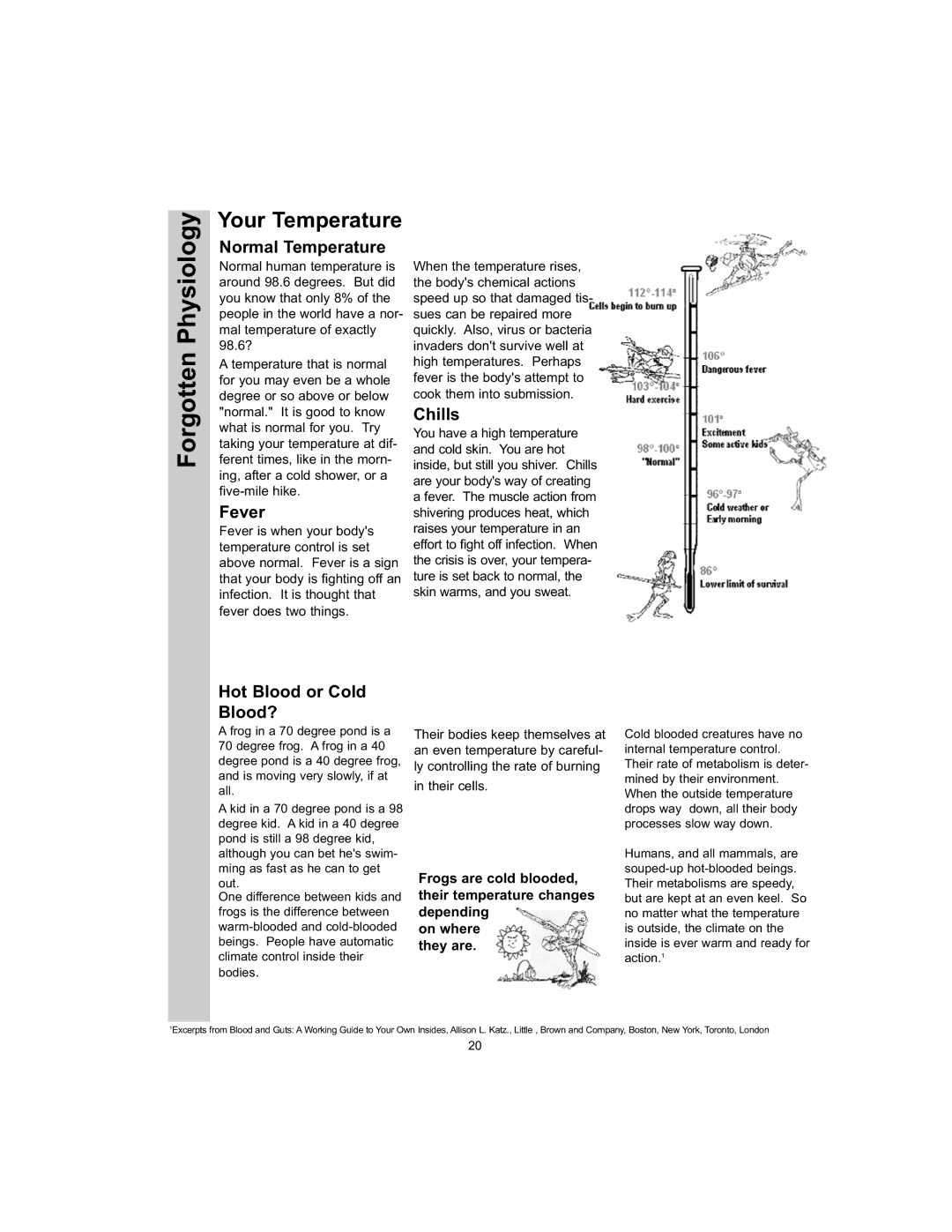
Forgotten Physiology
Your Temperature
Normal Temperature
Normal human temperature is around 98.6 degrees. But did you know that only 8% of the people in the world have a nor- mal temperature of exactly 98.6?
A temperature that is normal for you may even be a whole degree or so above or below "normal." It is good to know what is normal for you. Try taking your temperature at dif- ferent times, like in the morn- ing, after a cold shower, or a
Fever
Fever is when your body's temperature control is set above normal. Fever is a sign that your body is fighting off an infection. It is thought that fever does two things.
Hot Blood or Cold Blood?
A frog in a 70 degree pond is a 70 degree frog. A frog in a 40 degree pond is a 40 degree frog, and is moving very slowly, if at all.
A kid in a 70 degree pond is a 98 degree kid. A kid in a 40 degree pond is still a 98 degree kid, although you can bet he's swim- ming as fast as he can to get out.
One difference between kids and frogs is the difference between
When the temperature rises, the body's chemical actions speed up so that damaged tis- sues can be repaired more quickly. Also, virus or bacteria invaders don't survive well at high temperatures. Perhaps fever is the body's attempt to cook them into submission.
Chills
You have a high temperature and cold skin. You are hot inside, but still you shiver. Chills are your body's way of creating a fever. The muscle action from shivering produces heat, which raises your temperature in an effort to fight off infection. When the crisis is over, your tempera- ture is set back to normal, the skin warms, and you sweat.
Their bodies keep themselves at an even temperature by careful- ly controlling the rate of burning
in their cells.
Frogs are cold blooded, their temperature changes depending
on where they are.
Cold blooded creatures have no internal temperature control. Their rate of metabolism is deter- mined by their environment. When the outside temperature drops way down, all their body processes slow way down.
Humans, and all mammals, are
1Excerpts from Blood and Guts: A Working Guide to Your Own Insides, Allison L. Katz., Little , Brown and Company, Boston, New York, Toronto, London
20
